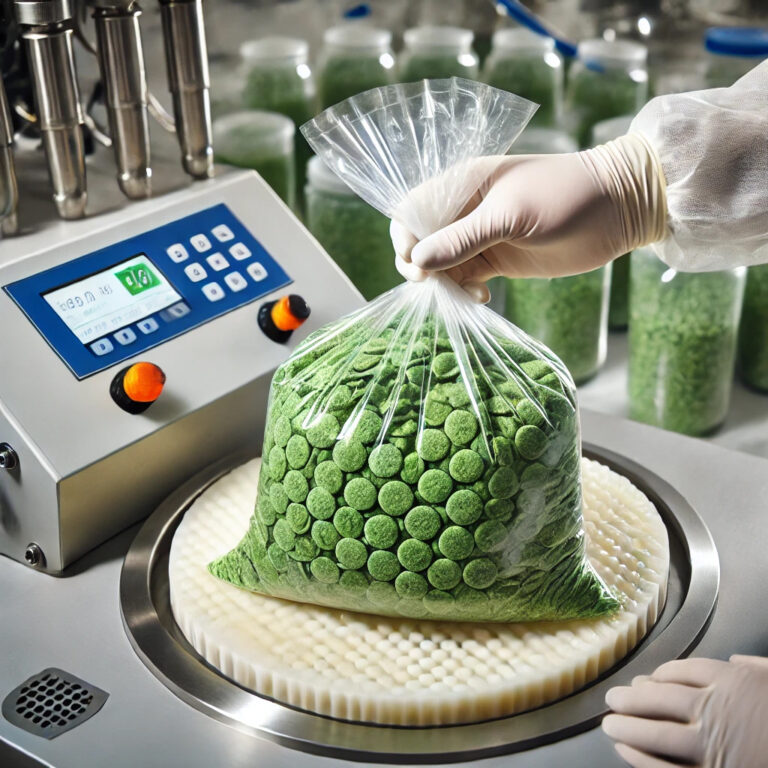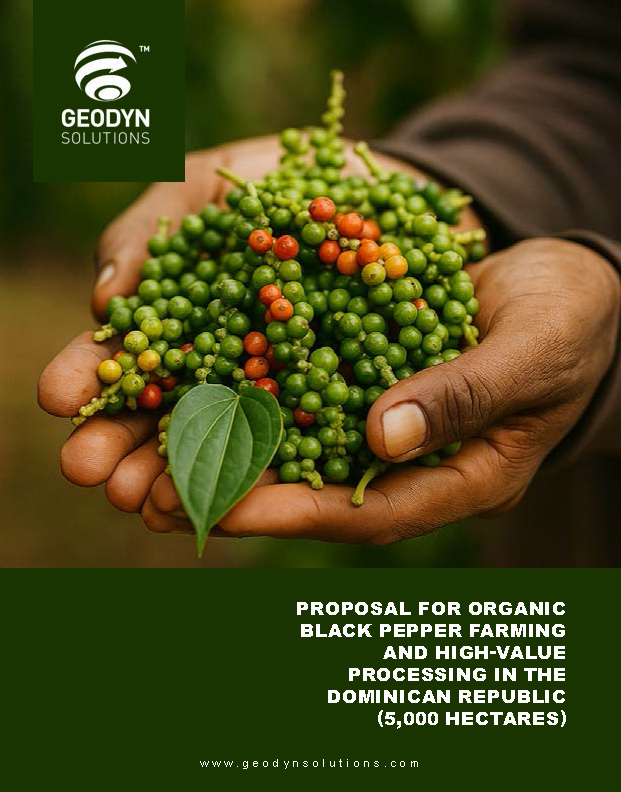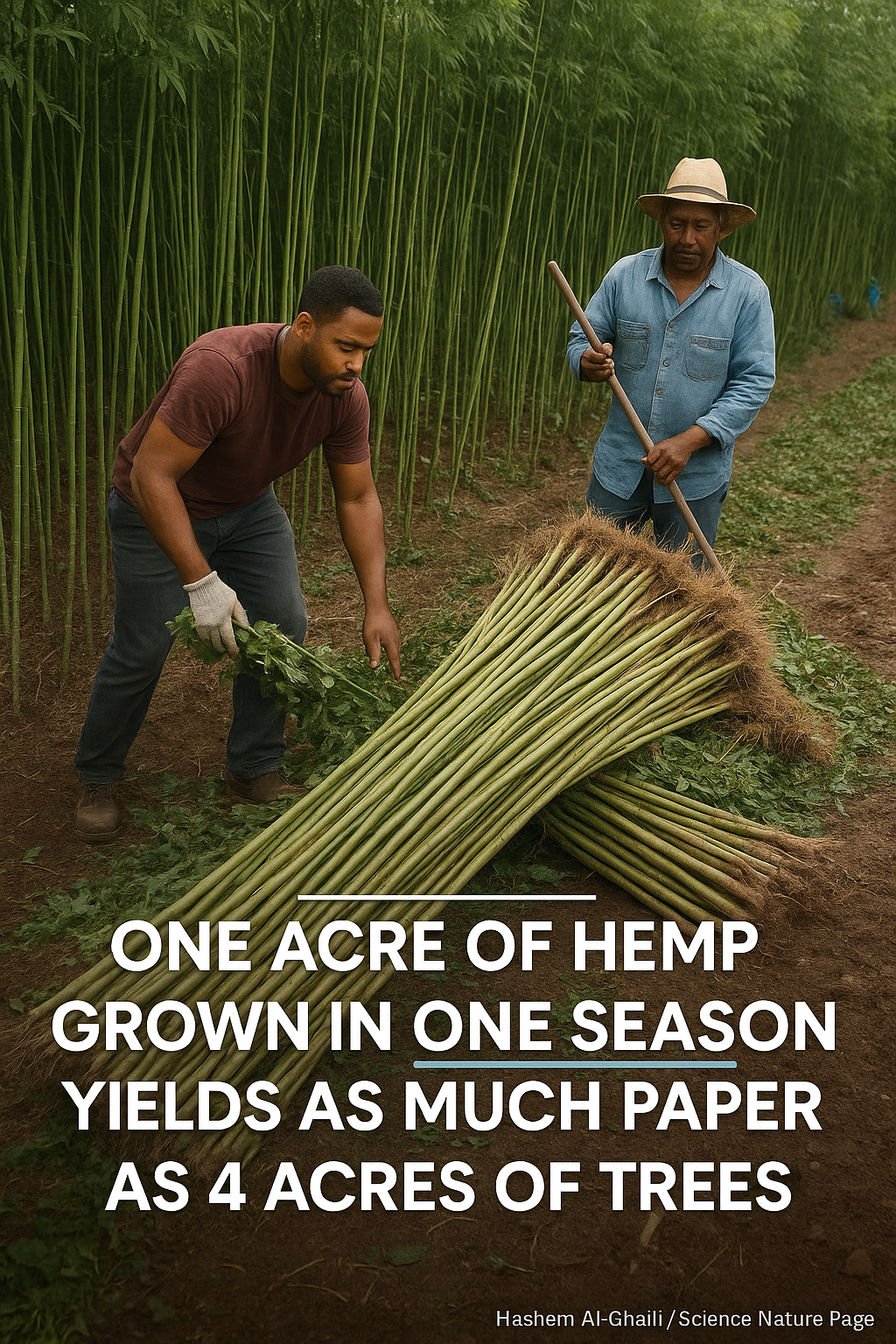Comprehensive Proposal for Geodyn Solutions: 5,000-Hectare Hemp Cultivation and High-End Paper Production in Marion County, Oregon, USA
Geodyn Solutions proposes to cultivate 5,000 hectares of industrial hemp in Marion County, Willamette Valley, Oregon, through partnerships with the Oregon Department of Agriculture, landowners, or cooperatives, leveraging the state’s fertile soils, robust hemp industry, and proximity to West Coast and global markets. The project will produce 100,000 tons/year of high-end specialty writing paper, utilizing proprietary and partner technologies, including a pyrolysis system with an Organic Rankine Cycle (ORC), turbine, and battery storage for self-sustainable electricity generation. Profits will be divided 80% to Geodyn Solutions and 20% to partners, with a 20% contingency on capital and operational expenditures. Geodyn will dedicate 10% of its profit to food and clean water projects for Oregonians in need, addressing food insecurity and water access challenges. The project will create 1,000 jobs, achieve a 115.7% ROI, sequester 45,000-110,000 tons of CO2 annually, and align with Oregon’s agricultural expertise and sustainability goals. Hemp is selected for its high cellulose content, short growth cycle, and established market presence, making it highly feasible for high-end paper production in Oregon.
- Project Overview
- Objective: Establish a 5,000-hectare hemp cultivation operation and a state-of-the-art paper factory in Marion County, Oregon, to produce high-end specialty writing paper for domestic and international markets.
- Location: Marion County, Willamette Valley, Oregon, chosen for its fertile volcanic soils, reliable rainfall (1,000 mm annually), optimal temperatures (10-25°C), and proximity to processing hubs and export ports. Oregon’s agricultural exports reached $2.3B in 2023 (e.g., hazelnuts, wine grapes).
- Crop: Industrial hemp (Cannabis sativa L.), selected for its high cellulose content (55-77%), short growth cycle (70-90 days), and established supply chain in Oregon (20,000 acres in 2023).
- Product: Specialty writing paper (e.g., premium stationery, archival paper) with 40-60% margins, priced at $2,000-$3,000/ton.
- Market: North America (U.S., Canada), Asia (China, Japan), and Europe, leveraging Oregon’s proximity to Pacific ports (e.g., Port of Portland).
- Profit Sharing: 80% to Geodyn Solutions, 20% to government, landowners, or cooperatives.
- Community Commitment: 10% of Geodyn’s profit will fund food and clean water projects to address food insecurity (12% of Oregonians, ~500,000 people in 2023) and rural water access issues (8% of households).
- Energy System: Pyrolysis with ORC, turbine, and battery storage to generate electricity from hemp waste, ensuring self-sustainability and additional revenue.
- Rationale for Oregon: Oregon is highly feasible for a 5,000-hectare hemp operation due to its established hemp industry, fertile soils, access to West Coast and Asian markets, and supportive regulations, ensuring strong ROI for high-end paper production.
- Location: Marion County, Willamette Valley
- Rationale for Optimal Profit:
- Agricultural Suitability: Fertile volcanic soils, 1,000 mm rainfall, and 10-25°C temperatures yield 12-20 tons/ha of hemp, supporting 2 harvests annually.
- Infrastructure: Proximity to Salem’s processing hubs, road networks (I-5), rail links, and Port of Portland for cost-effective exports.
- Market Access: West Coast location minimizes transport costs to U.S. markets and international ports for Asia and Europe.
- Government Support: Oregon Department of Agriculture’s hemp program (since 2015) offers streamlined licensing, grants, and tax incentives in Rural Enterprise Zones (e.g., 50% tax credit for 5 years under Oregon Business Development Act).
- Labor Availability: Skilled agricultural and industrial workforce, with competitive U.S. wages ($35,000/year average).
- Land Availability: Abundant underutilized farmland in Marion County, ideal for partnerships with landowners or cooperatives.
- Alternatives Considered:
- Southern Oregon (Jackson County): Warm climate but higher irrigation costs and competition with cannabis.
- Eastern Oregon (Umatilla County): Lower land costs but drier climate (500 mm rainfall) and limited infrastructure.
- Central Oregon (Deschutes County): Growing region but higher labor costs and water constraints.
- Conclusion: Marion County is optimal for its balance of agricultural suitability, infrastructure, and incentives, ensuring high yields and low logistics costs.
- Market Feasibility for 100,000 Tons/Year
- Global Market:
- Size: The global specialty paper market was valued at $27B in 2023, with specialty writing paper (stationery, archival, art paper) at $2.7-$4B (~2-3M tons/year). Projected CAGR of 4-5% through 2030.
- Hemp Paper Demand: Global hemp paper market projected to grow from $1B in 2023 to $10-18.87B by 2027 (2.5% CAGR), driven by sustainability trends.
- Fit: 100,000 tons/year represents 3.3-5% of the global specialty writing paper market, feasible given hemp’s eco-friendly appeal and demand in luxury markets.
- S. Market:
- Size: U.S. specialty writing paper market is $600-$800M (~300,000-400,000 tons/year at $2,000-$3,000/ton).
- Fit: 100,000 tons is ~25-33% of the U.S. market, achievable with a 50-50 domestic-export split (50,000 tons U.S., 50,000 tons exported to Asia/Europe).
- Competitive Edge:
- Sustainability: Hemp’s low chemical use, recyclability (7-8 cycles), and carbon sequestration align with U.S. and EU environmental regulations.
- Quality: High cellulose (55-77%) produces smooth, durable paper for premium applications.
- Branding: Hemp’s novelty attracts eco-conscious brands (e.g., stationery, art supplies).
- Export Strategy: Target U.S. luxury brands (50,000 tons), Canada (20,000 tons), Europe (20,000 tons, via EU Green Deal), and Asia (10,000 tons, via CPTPP markets).
- Conclusion: The global market supports 100,000 tons/year, with Oregon’s port access facilitating exports to meet demand.
- Partnerships with Government, Landowners, or Cooperatives
- Model: Partner with the Oregon Department of Agriculture, private landowners, or farmer cooperatives (e.g., Oregon Hemp Farmers Association) to access 5,000 hectares.
- Terms:
- Geodyn Solutions provides seeds, technology, training, and factory infrastructure.
- Partners provide land and local labor, eliminating land acquisition costs (leases average $6,000/ha/year).
- Profits split: 80% to Geodyn Solutions, 20% to partners.
- Benefits:
- Avoids land purchase, reducing CapEx.
- Leverages state tax credits, grants, and hemp expertise (20,000 acres in 2023).
- Engages local communities, aligning with Oregon’s rural development goals.
- Implementation:
- Government: Partner with the Oregon Department of Agriculture to access underutilized farmland in Marion County, supported by hemp program incentives.
- Landowners: Contract with large estates diversifying from hazelnuts or grass seed.
- Cooperatives: Collaborate with hemp-focused cooperatives for scalable cultivation and community buy-in.
- Community Commitment: Food and Clean Water Projects
- Commitment: Geodyn Solutions will dedicate 10% of its profit to food and clean water projects for Oregonians in need, addressing:
- Food Insecurity: 12% of Oregonians (500,000 people) faced food insecurity in 2023, particularly in rural areas.
- Water Access: 8% of rural households lack reliable clean water due to groundwater contamination and infrastructure gaps.
- Initiatives:
- Food Projects: Fund community gardens and smallholder farm support (e.g., seeds, irrigation) in Marion County, targeting 5,000 households.
- Clean Water Projects: Install 50 solar-powered water purification systems and upgrade rural water infrastructure, benefiting 20,000 people.
- Estimated Impact: Based on Geodyn’s adjusted net profit ($138.88M/year, see Section 6.4), 10% ($13.89M/year) will support these projects, enhancing local resilience and goodwill.
- Advanced Technology Factory
6.1. Factory Design
- Proprietary Technologies (Geodyn Solutions):
- EcoPulse™ Enzymatic Pulping: Optimizes fiber separation, reducing chemical use by 50% for high-end paper quality.
- ClearFiber™ TCF Bleaching: Totally Chlorine-Free system for eco-friendly, bright paper.
- SmartForm™ Paper Machine: Automated Fourdrinier machine with AI-driven precision, producing 100,000 tons/year.
- CycleWorks™ Water Recycling: Closed-loop system, reusing 95% of water.
- Partner Technologies:
- SolarTech (Partner: SunPower): 40 MW solar panels for 40% renewable energy.
- PyroTech (Partner: BTG Bioliquids): Fast pyrolysis system converting 30,000 tons/year hemp waste into 15,000 tons bio-oil, 9,000 tons syngas, and 6,000 tons biochar.
- ORC-Power (Partner: Turboden): Organic Rankine Cycle with turbine for heat recovery, generating 10 MW electricity.
- StoreVolt (Partner: Tesla): 20 MWh lithium-ion battery for electricity storage, ensuring 24/7 operation.
- Energy System: Pyrolysis with ORC chosen for:
- Efficiency: Converts 70-80% of biomass into bio-oil and syngas, suitable for ORC’s low-temperature heat recovery (200-300°C).
- Economics: Costs $3-5M/MW, offsetting 100% of factory electricity needs (8 MW). Biochar and surplus electricity add revenue.
- Scalability: Simplifies integration with ORC and turbines; biochar enhances soil or generates carbon credits.
- Energy Output:
- Biomass waste: 30,000 tons/year (30% of hemp yield).
- Pyrolysis: 15,000 tons bio-oil, 9,000 tons syngas, 6,000 tons biochar.
- ORC + turbine: 10 MW continuous power, covering factory needs (8 MW) with 2 MW surplus stored in battery or sold to grid.
- Battery: 20 MWh capacity, ensuring uninterrupted operation during low solar output.
- Location: Near Salem, Marion County, in a Rural Enterprise Zone for tax incentives and access to I-5 and Port of Portland.
- Capacity: 100,000 tons/year, utilizing 50% of hemp yield (60,000-125,000 tons from 5,000 ha).
6.2. Capital Expenditure (CapEx)
- Farm Setup: Seeds ($200/ha), irrigation ($500/ha), equipment ($400/ha) = $1,100/ha × 5,000 = $5.5M.
- Factory Construction:
- Building (100,000 sq. ft.): $22M (reflecting Oregon’s construction costs).
- Machinery (EcoPulse™, ClearFiber™, SmartForm™): $50M.
- Renewable energy systems (SolarTech: 40 MW, $9M; PyroTech, ORC-Power: 10 MW, $5M): $14M.
- Battery (StoreVolt): $6M.
- Other: Permits, training, R&D = $5M.
- Base CapEx: $5.5M + $97M = $102.5M.
- Contingency (20%): $102.5M × 0.2 = $20.5M.
- Total CapEx: $102.5M + $20.5M = $123M.
6.3. Operational Costs (OpEx)
- Annual Base Costs:
- Farm: Labor ($450/ha, reflecting Oregon’s wages), maintenance ($200/ha), utilities ($200/ha) = $850/ha × 5,000 = $4.25M/year.
- Factory: Labor (500 workers at $35,000/year), utilities ($0.8M, reduced by self-generated electricity), maintenance ($1.2M), transport ($1.2M) = $20.25M/year.
- Base OpEx: $4.25M + $20.25M = $24.5M/year.
- Contingency (20%): $24.5M × 0.2 = $4.9M/year.
- Total OpEx: $24.5M + $4.9M = $29.4M/year.
- Energy Savings: Pyrolysis-ORC eliminates $3M/year in electricity costs, reducing net OpEx to $26.4M/year.
6.4. Revenue and ROI
- Revenue:
- Paper: 100,000 tons/year at $2,500/ton = $250M/year.
- Biochar: 6,000 tons/year at $200/ton = $1.2M/year.
- Surplus electricity: 2 MW at $0.12/kWh, 8,760 hours = $2.1M/year.
- Total Revenue: $250M + $1.2M + $2.1M = $253.3M/year.
- Gross Profit: $253.3M – $26.4M (net OpEx) = $226.9M/year.
- Profit Sharing:
- Geodyn Solutions (80%): $181.52M/year.
- Partners (20%): $45.38M/year.
- Net Profit (after 20% taxes):
- Geodyn: $181.52M × 0.8 = $145.22M/year.
- Partners: $45.38M × 0.8 = $36.30M/year.
- Community Dedication (10% of Geodyn’s Profit):
- Geodyn’s net profit: $145.22M/year.
- 10% for food and water projects: $145.22M × 0.1 = $14.52M/year.
- Adjusted Geodyn profit: $145.22M – $14.52M = $130.70M/year.
- ROI: $130.70M / $123M (CapEx) = 106.3% annually, breakeven in ~11.3 months.
- 5-Year NPV (10% discount rate): ~$479M (Geodyn’s adjusted share).
- Job Creation
- Farm:
- 5,000 ha at 0.04 workers/ha = 200 direct jobs (planting, harvesting).
- Indirect jobs (transport, maintenance): 100.
- Factory:
- 500 direct jobs (operators, technicians, management).
- Indirect jobs (logistics, marketing): 200.
- Total Jobs: 1,000 (200 farm direct, 100 farm indirect, 500 factory direct, 200 factory indirect).
- Economic Impact: $17.5M/year in wages ($35,000/year average, reflecting Oregon’s labor market), boosting Marion County’s economy, comparable to Oregon’s agriculture sector (150,000 jobs in 2023).
- Environmental Impact (Farm to Paper)
- Positive Impacts:
- Carbon Sequestration: Hemp sequesters 9-22 tons CO2/ha, totaling 45,000-110,000 tons/year for 5,000 ha.
- Soil Health: Hemp improves soil nutrition, reduces erosion, and supports rotations.
- Biodiversity: Enhances biodiversity compared to monocrops like grass seed.
- Reduced Deforestation: Non-woody hemp fibers reduce reliance on wood pulp (40% of U.S. paper production).
- Eco-Friendly Processing: EcoPulse™, ClearFiber™, and CycleWorks™ minimize chemical and water waste.
- Biochar: 6,000 tons/year sequesters 15,000 tons CO2 and enhances soil fertility.
- Negative Impacts:
- Water Use: Hemp requires 500-700 mm/cycle, straining Willamette River resources.
- Land Use: 5,000 ha may displace hazelnuts or grass seed, requiring careful site selection.
- Mitigation:
- Drip irrigation to reduce water use by 30%.
- Use underutilized or degraded lands via partnerships.
- Community engagement to align with Oregon’s Environmental Quality Act and sustainability goals.
- Operations Plan
- Phase 1 (Year 1):
- Secure partnerships with Oregon Department of Agriculture, landowners, or cooperatives.
- Pilot 500 ha to test yields and processing.
- Begin factory construction in Marion County Rural Enterprise Zone.
- Phase 2 (Years 2-3):
- Scale to 5,000 ha, establish farmer cooperatives.
- Complete factory, trial production of 10,000 tons.
- Phase 3 (Years 4-5):
- Achieve full production (100,000 tons/year).
- Secure export contracts with North American, Asian, and European buyers.
- Partnerships:
- Local: Oregon Hemp Farmers Association, Oregon State University for training and research.
- International: SunPower (solar), BTG Bioliquids (pyrolysis), Turboden (ORC), Tesla (battery), Bast Fibre Technologies (hemp expertise).
- Risk Management:
- Insurance for floods (e.g., $50M in damages in Oregon, 2023).
- THC testing for hemp (<0.3%, compliant with Oregon’s hemp program).
- Diversified markets to mitigate price volatility.
- Feasibility Rationale
- Why Hemp: Hemp’s high cellulose (55-77%), short growth cycle (70-90 days), and established market presence in Oregon (20,000 acres in 2023) make it ideal for high-end paper. Kenaf’s limited commercialization and processing complexity reduce its feasibility.
- Why Oregon: Oregon’s robust hemp industry, fertile soils, and access to West Coast and Asian markets support a 5,000-hectare operation. Marion County’s infrastructure and tax incentives optimize ROI, though higher costs compared to other states (e.g., Kentucky) are offset by market proximity.
- Why Specialty Writing Paper: Offers 40-60% margins, leveraging hemp’s quality and sustainability for premium markets.
- Market Support: The global specialty writing paper market (2-3M tons/year) supports 100,000 tons (3.3-5% share), with the U.S. market (300,000-400,000 tons) absorbing ~50,000 tons and exports covering the rest.
- Recommendation
- Crop: Hemp, for its agronomic and economic advantages.
- Location: Marion County, Willamette Valley, for optimal profit.
- Product: Specialty writing paper (40-60% margin).
- Energy System: Pyrolysis with ORC, turbine, and battery for self-sustainability and revenue.
- Community Commitment: Dedicate 10% of Geodyn’s profit ($14.52M/year) to food and clean water projects.
- Rationale: The project leverages Oregon’s hemp expertise, proprietary technologies (EcoPulse™, ClearFiber™, SmartForm™, CycleWorks™), and partner technologies (SolarTech, PyroTech, ORC-Power, StoreVolt) to maximize ROI while supporting community and environmental goals.
- Financial Summary
- CapEx: $123M, including 20% contingency.
- OpEx: $26.4M/year (net, after $3M/year energy savings), including 20% contingency.
- Revenue: $253.3M/year (paper + biochar + electricity).
- Net Profit(after taxes and community dedication):
- Geodyn (80%, after 10% dedication): $130.70M/year.
- Partners (20%): $36.30M/year.
- ROI: 106.3% annually, breakeven in ~11.3 months.
- NPV (5 years): ~$479M (Geodyn’s adjusted share).
- Jobs: 1,000.
- Conclusion
Geodyn Solutions can establish a profitable, sustainable hemp-based paper industry in Marion County, Oregon, producing 100,000 tons/year of specialty writing paper with a 40-60% margin. Partnerships eliminate land acquisition costs, while proprietary and partner technologies ensure self-sustainability. The project creates 1,000 jobs, achieves a 106.3% ROI, sequesters 45,000-110,000 tons of CO2 annually, and dedicates $14.52M/year to food and clean water projects for Oregonians in need. The global market (2-3M tons) supports this volume, with Oregon’s port access facilitating exports. We recommend proceeding with hemp, starting with a 500-ha pilot in Year 1, scaling to full production by Year 4.
References
- Oregon Department of Agriculture: Hemp Program 2023
- USDA: 2018 Farm Bill Hemp Provisions
- MDPI: Hemp Agronomy
- PMC: Hemp as a Sustainable Raw Material
- FAO: Organic Farming in the U.S.
- S. Census Bureau: Oregon Economic Data 2023
- Industry Reports: Global Specialty Paper Market 2023-2030
- Oregon Business Development Act
- USDA: Oregon Food Insecurity Report 2023




